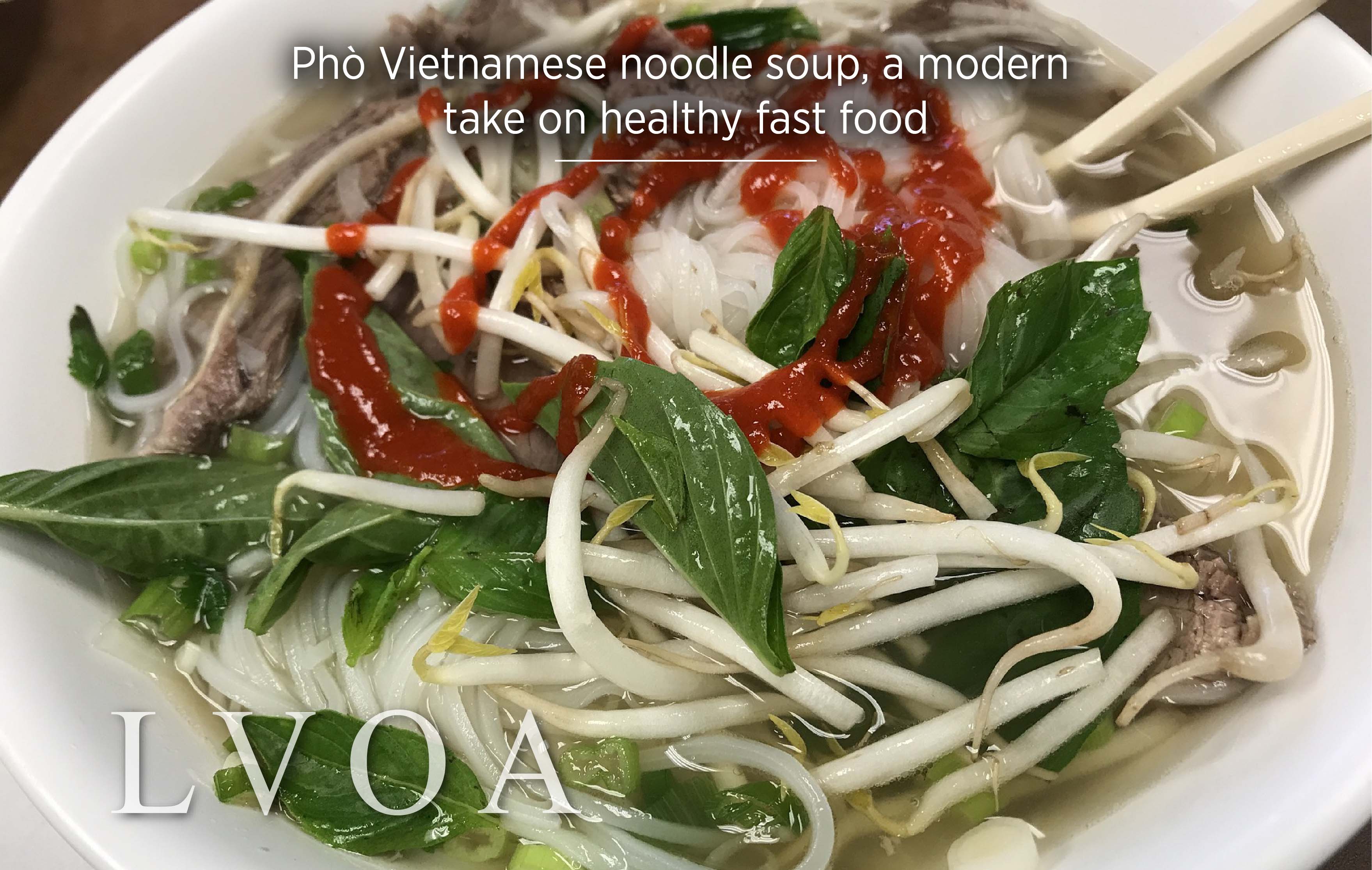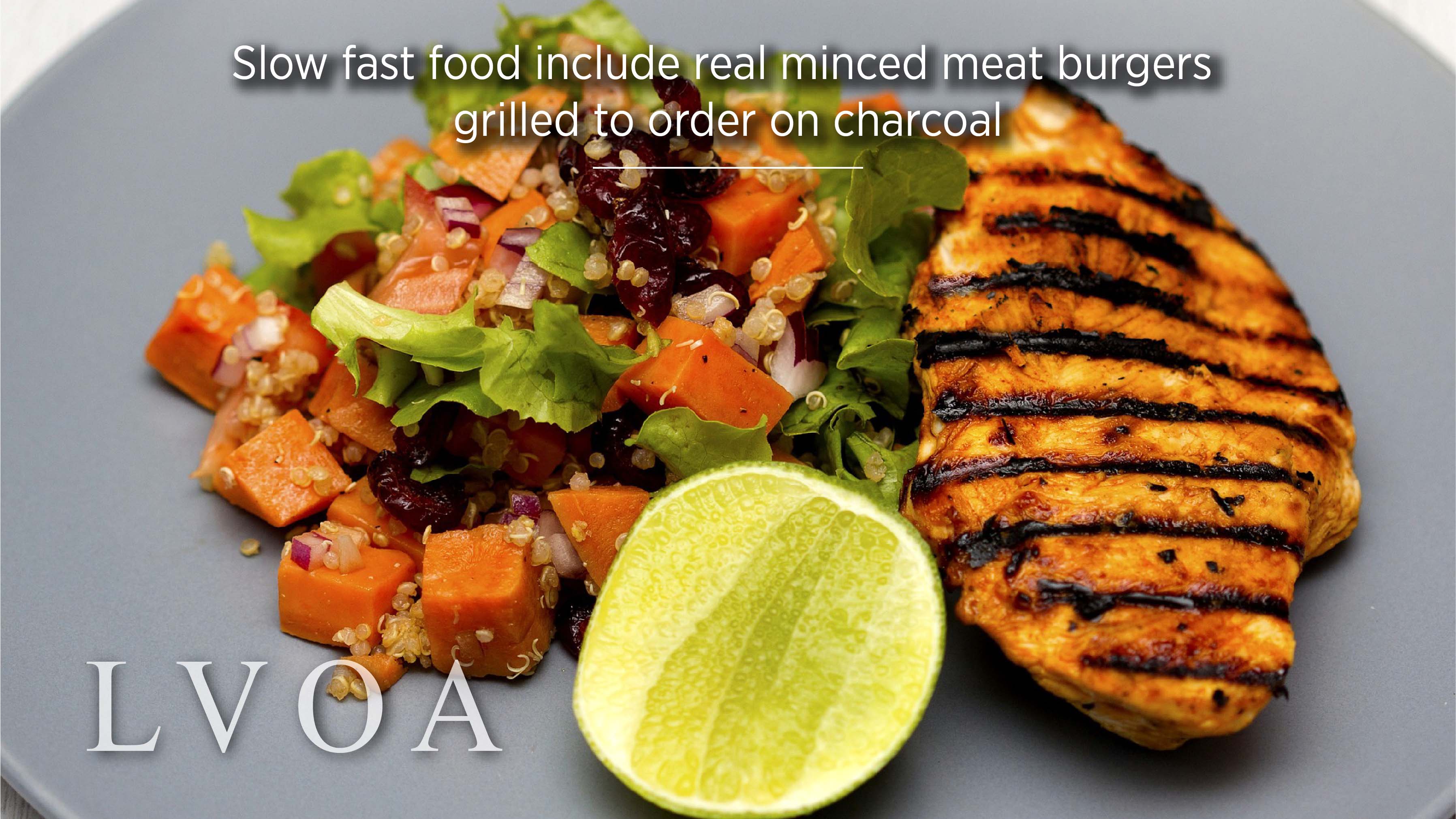People are more aware of what they eat and are more health conscious and in an economic environment where everybody works, couples more often than not do not have the opportunity to cook at home.
Eating out in ‘proper restaurants’ all the time can be too costly for many, and then fast food just won’t do because it is deep fried and contains oil and grease, too many carbs and the list goes on.
Slow fast food
So a new trend is sometimes referred to as ‘slow fast food’ where menu items are made to order without all the grease and still arrive at the table within a matter of minutes. Slow fast food has slowly inched its way up the healthy list and includes flame grilled chicken, burgers grilled to order on charcoal instead of on a hotplate with oil and as an Asian example Vietnamese phò noodle soups.
It is the modern take on the global, grassroots movement Slow Food Organisation that links the pleasure of food with a commitment to community and the environment and has been the driving force behind nurturing a love of diversity and sharing of knowledge about good food since the 1980’s.
Slow food takeover
Slow food is about good, clean and fair food and promoting bio-diversity and sustainable means of producing agriculture. Food is locally grown, usually organic, artisanal, and healthy preserving traditional and regional food, while also promoting sustainability.
Slow food restaurants usually offer farm to table menus. On a farm to table menu you can read about where your food came from, on which farm the ingredients were grown, or the meat was raised. Fresh local seasonal produce and local raised cattle do not have to travel far.

Common grounds
Although fast food and slow food don’t seem to have much in common, there are some people trying to make fast food into something that is more like slow food. Today, we can see loads of examples of this attitude applied to foods from white-table cloth restaurants to ‘pub grub’ and even special sandwich outlets.
Always with a particular attention to packaging, the latest ‘slow fast food’ is actually fast food that’s nevertheless healthy comprising seasonally and traditionally cultivated fruit and vegetables, gently conserved in hand-filled glass pots and ready to enjoy immediately. Slow fast food packaging also combines modern presentations of fresh fruit and vegetables with the type of design used traditionally for conserved foods.
Keeping mileage down
As consumers we’re increasingly aware of the effects on the environment of food production methods. We are also encouraged to keep our food miles down as the distance our meals have travelled and their means of transportation add to the carbon dioxide emissions contributing to climate change.
Our changing taste and attitude towards food is also having an effect on supermarkets and food producers. Supermarkets are acutely aware of the marketing benefits of promoting food’s provenance and of course they want to capitalise on that increase in demand.
There is a great need for more awareness of the origin of the daily food we eat and its carbon foot print, flying ingredients be it fresh or otherwise halfway around the world, is something that we have to put behind us.
Healthier alternative
Stocking up on organic product, shopping for healthier replacements, avoiding hormone treated meat, fish & dairy, getting rid of plastics, removing high fructose corn syrup and other chemically filled foods will bring you and your family closer to healthier slow fast food.
Being truly sustainable requires relentless attention to detail; digging deep and making hard choices that sometimes cost more but will pay back in the satisfaction of doing the right thing and giving consumers a better choice.
It involves focusing on sustainable sourcing, reducing waste, increasing recycling, and, most importantly, delivering consistently delicious products for all of us to enjoy. There is nothing wrong with reverting to earlier days where we only had access to seasonal produce as it wasn’t carted all over the world all year around. Taking a step back can be a good thing at times.
If you like what you just read click follow Larry Van Ooyen Associates Ltd and stay tuned for more articles from our Associates..







